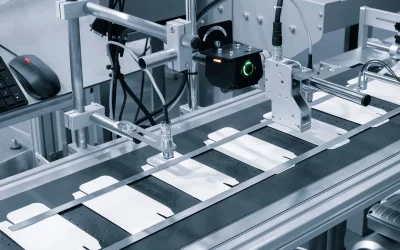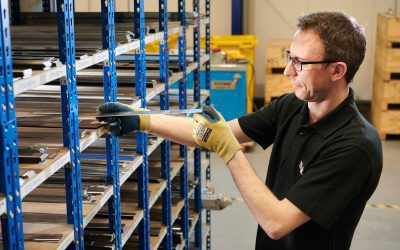Maximizing Operational Efficiency
As businesses strive for greater cost-effectiveness and efficiencies, one of the key trends that is showing signs of growth is a move away from SKU proliferation. Traditionally there has been a focus on maximizing product inventory to provide as many options for customers as possible. But increasing the inventory places increasing pressure on packaging operations which in turn drives up operational costs. Rather than becoming trapped in a never-ending cycle of adding more and more products to a growing inventory and having to maintain a huge stock of packaging to fit in with the different products, the trend in maximizing operational efficiency focuses on refining your product offering. By being more targeted you can keep your costs in check while delivering a better experience to customers. It is much better to have a smaller pool of products that sell more effectively than a vast inventory of products that rarely sell.
As well as being more targeted in terms of products, the integration of technology will play a huge role in the packaging process and boosting operational efficiency. Technologies such as artificial intelligence, the internet of packaging as well as augmented and virtual reality will only continue to grow in 2021. Many more packaging lines will also take advantage of real-time analytics, using tech such as sensors to collect data which can be evaluated to streamline operations and boost productivity.
Increasing Automation
Brands are starting to increase the rate at which they automate their packaging processes and there are many factors that are behind this decision, from staffing shortages through to manufacturing speed. The use of robots in the packaging process is becoming increasingly common with many steps in the packaging process being automated. This helps to reduce costs, improve efficiency and boost productivity.
Promoting Sustainability
Despite the tumultuous year that many businesses have experienced in response to the Covid-19 pandemic, consumer demand particularly for eCommerce brands has shown no sign of slowing down. This increase in demand places greater emphasis on sustainability. There is a distinct preference amongst consumers for brands that demonstrate a commitment to sustainability.
In the product development process, the packaging is one of the things that generates huge amounts of waste. Businesses are looked upon favourably if they can offer reusable or recycled packaging or incorporate environmentally friendly materials, systems or techniques into the manufacturing process.
A design trend that has increased is the use of logos to demonstrate environmentally friendly properties of the packaging. These include materials that can be recycled, they are biodegradable, eco-friendly or reusable. Some brands have taken this a step further with an eco-badge to demonstrate their commitment to environmental causes or reforestation initiatives.
When it comes to packaging materials, 2020 saw a huge uptick in the demand for sustainable packaging. Rather than the material alone, it was the entire lifecycle of the packaging that proved popular. This included things such as using as little packaging as possible while improving the efficiency and sustainability of products.
From placing charges on grocery store plastic carrier bags to replacing straws from plastic with more environmentally friendly alternatives, sustainable packaging was introduced into the market more and more. Some of the alternatives that are being widely adopted include biodegradable shrink films derived from plant-based materials which reduce the huge quantities of plastic waste that businesses produce.
As more creative and innovative methods of sustainable packaging are introduced, this is a trend that is set to grow exponentially in the coming years.
Enhancing the Customer Experience
With sustainability in mind, customer expectations are also on the increase. When customers place an order, they want a positive unboxing experience that’s creative and personalized. We all know how powerful branding is and how effective branding can position you in the marketplace. There’s a lot more to an unboxing experience than supplying a branded box or envelope. It’s about creating an experience around your product and one of the best ways to do this is by making sure that everything in your packaging is customized. Environmentally friendly tissue paper to wrap items and void fillers which are branded. You can be a little creative with this process as you don’t have to use your logo, you can use a variety of design elements that reflect your brand. Seal tape is also another great addition so too are thank you cards or freebies such as stickers can also help to create a memorable experience for customers.
Being Creative
The unboxing experience links in well with the next trend which is interactive or gamified packaging. This type of packaging is one that promotes digital or physical interactions with consumers. There are two ways in which this can be used. The first is through digital technologies such as smartphone usage as well as augmented reality to engage customers with video content. Secondly, there is the use of digital technology such as QR codes. Special edition packaging with 3D animated videos embedded into the packaging are a great little addition. It is little things like this that really capture the attention of consumers and drive sales.
According to Mordor Intelligence, technology, innovation, sustainability and economics are some of the things that are driving trends in the packaging industry. The whole way in which customers are engaging with packaging is changing. They expect much more than a box that transports their product from the warehouse to their home. They are looking for an experience albeit with a focus on sustainability and a preference for reusable or recyclable materials. That said, it’s important that the use of recyclable materials doesn’t reduce the quality or the experience that the customer receives. Packaging can go a long way to creating an overall impression of brands, particularly when it comes to first time orders. It is up to businesses to review the trends, see which ones would be the best fit for their business model and most importantly focus on those that their customers (both new and existing) would be most receptive to.


 +44 (0) 1909 519815
+44 (0) 1909 519815 


